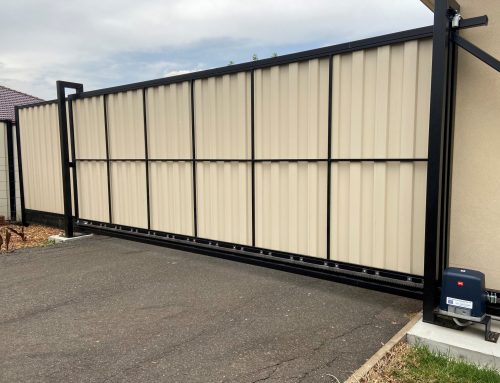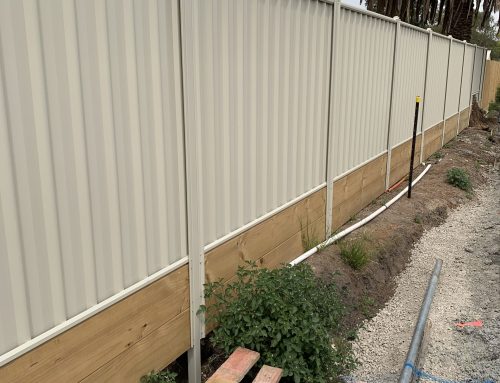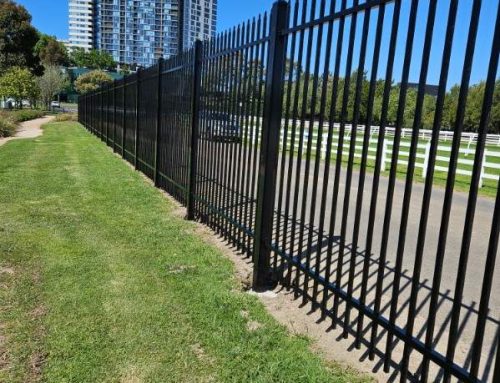Manufacturing Barbed Wire
We’ve had a few previous blog posts about barbed wire, but today we will drill right into the core of it. Let’s find out how is barbed wire made!
If interested, you can take a look at our previous post about barbed wire:
Barbed Wire Classification Made Simple
You might be also interested in razor wire:
A Quick Razor Wire Classification
Just as a quick reminder, barbed wire is a metal cable that has regularly spaced sharp projections that are called barbs. That cable has two wires that are twisted around each other, allowing it to be strong enough to expand and contract without breaking when influenced by external factors such as temperature.
Barbed wire has been around for centuries, and it has changed greatly from the length to the material used. Today we are more interested in the way the barbed wire is manufactured. So let’s dive in.
Let’s start with the material barbed wire is made of. In the old days, at the beginning of barbed wire invention, it was made out of gold and later on of the wrought iron. Only at the end of the 19th century, when the steelmaking industry had developed enough, it allowed producing barbed wire of steel.
Nowadays, the barbed wire that has been made of steel is also galvanized to protect it from corrosion. During the galvanizing process, a think layer of zinc is applied to the barbed wire, giving it better protection. In some cases, it can be coated with aluminium coating instead, and sometimes the barbed wire itself can be made of aluminium.
The whole process, before actually making the barbed wire, is much more complex than making the wire itself.
You have to start with MAKING STEEL INGOTS. What are they? Good questions! An ingot is a piece of pure material (relatively) that has been cast into a shape that can be processed further. In the case of steel ingots, that material is steel.
To make steel ingots, iron ore, coke and limestone have to be heated by hot pressurized air in a blast furnace. The coke, producing the hear and carbon monoxide, will melt the iron ore. Slag is formed from the impurities of the iron due to the limestone reaction with them. In the end, you will get a pig iron as a result.
The final iron pig consists of at least 90% iron, 3-5% carbon, and also some different impurities. This is not the end of the process though. To convert pig iron into steel, the impurities and most of the carbon have to be removed. Why? Because if the iron has too much carbon, it is too brittle. But without it, iron would be much weaker than steel. There are many ways to eliminate impurities. The most common one and the only one we will mention now is called the basic oxygen steel process.
The basic oxygen steel process is a process where oxygen is blown through a molten pig iron. That lowers the carbon content of the alloy, changing it into low-carbon steel. During this process, carbon is released as carbon monoxide and impurities as slag. Then the molten steel is poured into molds. After cooling down, these ingots can weight as much as thousands of kilograms each.
The next step before making barbed wire would be to MAKE BILLETS. Having a dimension of usually less than 15 cm by 15 cm, the billet is a bar of steel with a square cross-section. A steel ingot is heated to about 1200°C, then it is rolled between grooved rolls to get the size needed. Then giant shears will cut the billet to the desired length. Once that’s done, the billets are cooled down.
Almost there! Now let’s look at how the wire rod is made. Once again, steel billets are heated and again rolled back and forth between grooved rolls until it’s a round bar and has a diameter of 5.6mm. Then this wire rod is rolled into a coil and sent off to the wire manufacturer.
There are still a few steps before the barbed wire can be made of the wire rod. The surface coating of iron oxide (scale), which had formed during when the steel was heated, has to be removed. It can be done in a few ways. First is to soak it in a hot, dilute acid. The second way to remove scale is when to bend the wire rod back and forth between a series of wheels. The third way to do it is to bast it off with fast particles of sand, aluminium oxide, or cast-iron shot. Whichever the method, once the scale has been removed, it’s time to cover wire rod with lime, borax o phosphate. Why it’s needed? Well, the reason behind that is that applied coating of lime, borax o phosphate will remove any traces of acid, helps to prevent rust, and also will lubricate the wire rod when it’s time to make it into barbed wire.
Later the wire rod is shaped to a point on one end through a process known as drawing. During this process, the wire is pulled through a die until the needed diameter has been established. For barbed wire, the diameter is usually 2.5 mm. Then it’s heated again during a process called annealing.
Now to the most interesting part! THE BARBED WIRE IS MADE! It’s much faster and easier than the whole previous process of making the wire rod.
Firstly, the wire is usually galvanized to protect it from the corrosion. It’s a process of its own. Then there’s a machine that will do all the work. Two wires are fed into the machine and twisted together. That process will form a cable. Once that’s done, another wire is fended into the machine, but this time from the side. This wire is twisted around the cable wires and then cut at an angle on both sides. Cutting that wire will form the two-pointed barb. As we may know from our previous blog posts about barbed wire, we can also have four-pointed barbed wire. In this case, two wires are twisted around the cable instead of one. Once the barb is on the cable, this cable is pulled along a set distance to make sure the barbs are at an even distance, and then the whole process is repeated until the desired length of barbed wire has been established.
And that’s how barbed wire is made!
If you need barbed wire fencing, contact Diamond Fence and we’ll find the best solution for you!
Give us a call on (03) 9753 4566, shoot us an email on info@diamondfence.com.au, or just get a FREE online fencing quote.








